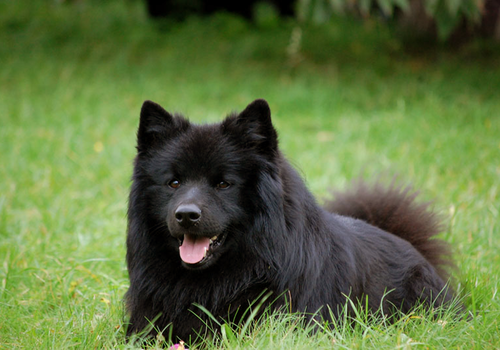The Lappie has a thick double coat that forms a ruff around the neck and is longer on the back of the legs and the tail. Brush the coat weekly to keep it clean and remove dead hair. During spring and fall shedding seasons, daily brushing will help keep excess hair under control.
The rest is basic care. Trim the nails as needed, usually every few weeks. Brush the teeth frequently with a vet-approved pet toothpaste for good overall health and fresh breath.
Check the ears weekly for dirt, redness, or a bad odor that could indicate an infection. If the ears look dirty, wipe them out with a cotton ball dampened with a gentle, pH-balanced ear cleaner recommended by your veterinarian. Start grooming your Lappie at an early age so he learns to accept it willingly.
Swedish Lapphunds are a medium-high-energy breed and benefit from daily exercise. They do have an “on/off” switch; that is to say, they are very energetic, alert, and active, but capable of settling down and relaxing.
This is an intelligent and active breed requiring regular mental and physical exercise to prevent boredom. It is not a breed to be left alone for long periods, and when outdoors a fenced yard is a must. As with most breeds, a bored Lappie will find his way into mischief.
The Swedish Lapphund should do well on a high-qualitydog food, whether commercially manufactured or home-prepared with your veterinarian’s supervision and approval. Any diet should be appropriate to the dog’s age (puppy, adult, or senior).
Some dogs are prone to gettingoverweight, so watch your dog’s calorie consumption and weight level.Treatscan be an important aid in training, but giving too many can cause obesity.
Learn about whichhuman foodsare safe for dogs, and which are not. Check with your vet if you have any concerns about your dog’s weight or diet.Clean, fresh water should be available at all times.
Swedish Lapphunds are generally a healthy breed.Responsible breederswill test for hip dysplasia and PRA and will have health information readily available on their dogs.Working with a responsible breeder, prospective owners can gain the education they need to learn about specific health concerns within the breed.
Swedish Lapphundshave an eager and curious nature, resulting in a high level of trainability. With the challenge of an independent mind and occasional stubborn streak, training a Lappie requires a light hand, patience, and a sense of humor.He is well-suited for herding, agility, obedience, and other canine sports.











